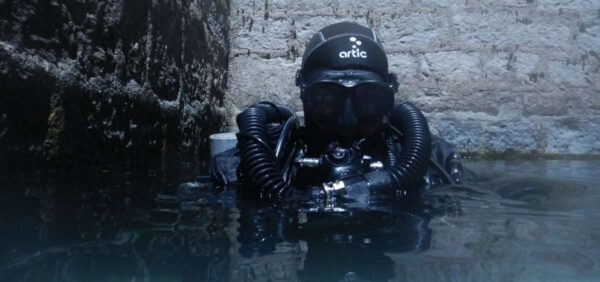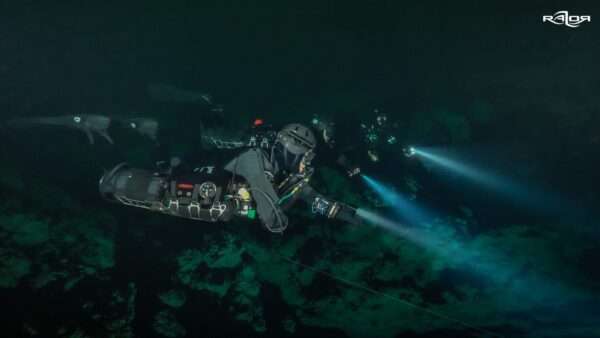For technical divers ready to take their underwater exploration to the next level, Discover the fascinating world of rebreathers.
Acquiring your first rebreather can be quite a challenge. Like any significant investment, making the right choice is crucial to avoiding double-spending.
CCRs have revolutionized diving with extended bottom times, increased gas efficiency, and a new level of excitement. But with so many options on the market, it’s hard to choose a CCR and pick the right one for your needs.
Dive into the Community of Rebreather Divers

Before getting into rebreather diving, immerse yourself in a community of like-minded divers. Look for a CCR diving instructor who can mentor and support you even after training. Remember, all rebreathers work, but a supportive community will enhance your learning experience and open doors to post-class fun CCR dives. So, find your tribe and dive in deep!
Other CCR divers can help you with spare parts or provide tips and tricks locally.
The Joy of Owning a New Rebreather

Picture this: you’re ready to take the plunge, but should you opt for a used rebreather? Our advice: do yourself a favor and purchase a brand-new CCR. You want to avoid inheriting someone else’s calamities or questionable choices. Start with a clean slate and ensure that an ignorant diver has not messed up your CCR. Trust us, it’s worth the investment!
Easy Assembly of your CCR unit for Smooth Dives
Nobody wants to deal with complicated fittings and fine-threaded nightmares underwater. When selecting a rebreather, consider how easy it is to assemble. Look for user-friendly designs that won’t leave you struggling with scarred threads or stripped connections. Smooth assembly of your rebreather means stress-free CCR dives!
Size, trim, and weight distribution of the CCR
Size, trim, and weight distribution often offer limited or no adjustment. This implies that you might have to accept what you initially get. Selecting a CCR unit that fits you correctly, feels comfortable to wear (especially the breathing loop), provides easy breathing, and trims out effectively. Experienced rebreather divers trying a new unit have expressed their surprise while realizing a rebreather could trim out and breathe so well! Reflecting on such experiences raises questions about their comfort and satisfaction during their initial encounters with rebreathers.
Although these factors may seem adaptable, neglecting them can lead to significant frustration for divers over time. Additionally, attempting to resolve an improperly balanced unit by adding unnecessary weight is generally an impractical solution.
Traveling with your Rebreather
Are you considering traveling with your rebreather? For many divers, this is a common practice, making the portability of a CCR unit a crucial factor in the decision-making process.
While it’s possible to transport nearly any rebreather in checked baggage, the potential risk of an airline losing or damaging your equipment can be a significant concern. A single unfortunate incident may lead you to reconsider checking your rebreather in the future. A practical approach is to ensure that all critical and non-replaceable components are carried in your hand luggage. At the same time, items that can be replaced or rented at the destination, such as a wing or harness, can be checked. This way, even if your checked bags are misplaced, you can still rent or replace the essential items and continue diving with your rebreather as planned.
Consider whether your entire rebreather can be taken as a carry-on item for added convenience and peace of mind. Some rebreathers in the market are designed for easy portability, reducing the stress and potential frustration of dealing with a missing rebreather during your travels.
Train your CCR skills in Your Element
Whether you’re a warm-water enthusiast or a cold-water wreck lover, ensure your rebreather training aligns with your diving environment. If you prefer warm-water dives, train at a tropical resort to enjoy the crystal-clear waters. On the other hand, if your heart belongs to cold-water wrecks, seek local CCR diving training opportunities. Remember, support your local gunfighter and master your diving domain!
Rebreather Manufacturing Location
Gone are the days when the manufacturing location of a rebreather mattered the most. Today, what truly counts is the quality of construction of your rebreather. Domestic companies may source parts globally, while others manufacture locally. Don’t get caught up in the “location, location” frenzy. Instead, focus on reputable CCR brands prioritizing customer support, regardless of their geographical origin.
Rebreather Spare Parts Accessibility
No matter how robust your rebreather claims to be, accidents happen, and parts break. That’s where spare parts accessibility comes into play. Avoid rebreathers that restrict you to expensive replacement parts from a single distributor. Opt for models with readily available parts from multiple sources. Remember, freedom of choice ensures uninterrupted diving adventures!
Scrubbers, Counter-Lungs, and the Art of Breathing
While scrubbers and counter-lungs are vital components of a rebreather, don’t let them overshadow the importance of CCR Diving training. Seek out rebreather instructors who dive the unit you want to train on. Remember, the true essence of diving lies in mastering the art of breathing underwater! Your CCR instructor should be open to answering further questions after your training during fun dives or by phone or email.
Battery Life, Charging, and Computer Continuity
Imagine being on a dive site with a dead battery and a team eager to explore. Battery life, charging options, and computer continuity are crucial factors when choosing a rebreather. Look for manufacturers that prioritize long-lasting battery life and offer versatile charging solutions. A reliable rebreather ensures a smooth diving experience, allowing you to focus on the underwater wonders rather than worrying about equipment malfunctions.
When selecting a rebreather, consider the type of battery it uses. Lithium-ion batteries, for instance, are known for their extended lifespan and high energy density. Rebreathers equipped with lithium-ion batteries can provide longer operational hours, reducing the need for frequent recharging during a dive.

Dive your Rebreather with Confidence and Discover the Depths
Summarizing Key Points for Choosing a Rebreather with Confidence
In navigating the intricacies of rebreather selection, several key considerations emerge as essential for a confident and enjoyable diving experience. From the significance of community support to the technical aspects, each factor is crucial in ensuring an enjoyable and safe underwater journey. As we recap our journey through this comprehensive guide, it becomes evident that the right rebreather is not merely a piece of equipment but a personalized tool that aligns with individual preferences and diving aspirations.

When you choose a rebreather, we’ve emphasized the importance of
- Building a strong community of like-minded divers for support and camaraderie.
- Choosing a new rebreather to start with a clean slate, avoiding potential risks.
- Prioritizing user-friendly designs for easy assembly and stress-free dives.
- Choosing a Rebreather with the right size, trim, and weight distribution improves the diving experience.
- Owning a travel-friendly CCR Unit will make your diving around the world easier.
- Aligning training with the diving environment to master skills suited to specific preferences.
- Selecting reputable CCR brands based on their commitment to quality and customer support.
- Ensuring spare parts accessibility to prevent interruptions during underwater adventures.
- Mastering the art of breathing through comprehensive CCR diving training.
- Considering technical aspects like battery life, charging options, and computer continuity.
Encouraging CCR Divers to Prioritize Their Preferences and Needs in the Selection Process
As you choose the right rebreather, remember that personal preferences and individual needs should guide your decision-making process. Dive gear is not one-size-fits-all, and the perfect rebreather for one diver may not be ideal for another. Prioritize what matters most to you – extended bottom times, ease of assembly, or technical specifications. By placing your preferences at the forefront of your decision-making, you ensure that the chosen rebreather becomes an extension of your diving ambitions.
Concluding with an Invitation to Explore the Underwater World Confidently with the Right Rebreather
In conclusion, armed with the knowledge gained from this CCR guide, we invite you to explore the underwater world confidently. The right rebreather is your passport to extended dives, increased gas efficiency, and heightened excitement beneath the surface. Dive confidently into the depths, knowing that your equipment aligns with your preferences, is supported by a robust community, and meets the technical criteria for a good and safe underwater experience. Unleash the adventurer within, and share the wonders of the deep with the right rebreather by your side. Happy rebreather diving!
If you want to know more about Side Mount Rebreathers, read our article.





